Cymatophora is a monotypic moth genus in the family Geometridae erected by Jacob Hübner in 1812. Its only species, Cymatophora approximaria, the giant gray moth, was described by the same author in the same year. It is found mostly in the southeastern United States. It is found in North America.
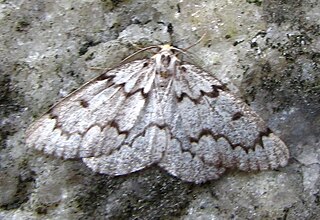
Enypia is a genus of moths, commonly called girdle moths, in the family Geometridae.
Eumacrodes is a monotypic moth genus in the family Geometridae described by Warren in 1905. Its only species, Eumacrodes yponomeutaria, first described by Achille Guenée in 1858, is found in the Caribbean and North America.
Holochroa is a monotypic moth genus in the family Geometridae. Its only species, Holochroa dissociarius, is found in North America. The species was described by George Duryea Hulst in 1887 and he described the genus nine years later in 1896.
Rifargia bichorda, or Hampson's prominent moth, is a species of moth in the family Notodontidae. It was first described by George Hampson in 1901 and it is found in North America.
Dichagyris kyune is a species of cutworm or dart moth in the family Noctuidae. It was first described by William Barnes in 1904 and it is found in North America.
Annaphila astrologa is a moth in the family Noctuidae first described by William Barnes and James Halliday McDunnough in 1918. It is found in North America.
Euaontia clarki is a species of moth in the family Erebidae. It was first described by William Barnes and James Halliday McDunnough in 1916 and it is found in North America.
Paradiarsia littoralis, the Labrador dart moth, is a species of cutworm or dart moth in the family Noctuidae. It is found in North America.
Digrammia californiaria, the Californian granite, is a species of geometrid moth in the family Geometridae. It is found in North America.
Sympistis linda is a species of moth in the family Noctuidae. It was first described by William Barnes and James Halliday McDunnough in 1913 and it is found in North America.
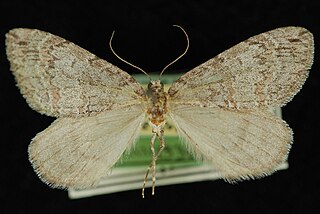
Hydriomena expurgata is a species of moth in the family Geometridae first described by William Barnes and James Halliday McDunnough in 1918. It is found in North America.
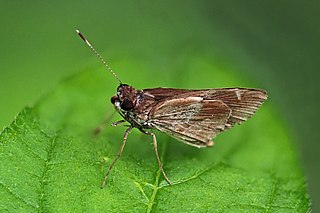
Monca crispinus, the violet-patched skipper, is a species of grass skipper in the family of butterflies known as Hesperiidae. It is found in North and CentralAmerica.

Enypia griseata, the mountain girdle, is a species of geometrid moth in the family Geometridae. It is found in North America.
Datana ranaeceps, the post-burn datana, is a species of moth in the family Notodontidae. Other common names include the heart-leaved catchfly and ranaeceps datana moth. It was first described by Félix Édouard Guérin-Méneville in 1844 and it is found in North America.
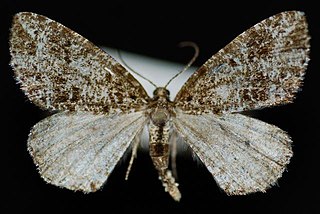
Orthofidonia exornata is a species of geometrid moth in the family Geometridae first described by Francis Walker in 1862. It is found in North America.
Heterocampa astartoides is a species of moth in the family Notodontidae. It was first described by Foster Hendrickson Benjamin in 1932 and it is found in North America.
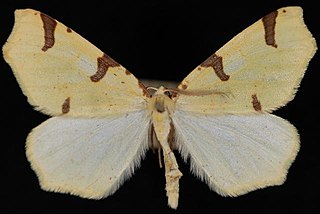
Neoterpes trianguliferata, the canary thorn, is a moth in the family Geometridae. The species was first described by Alpheus Spring Packard in 1871. It is found in North America.
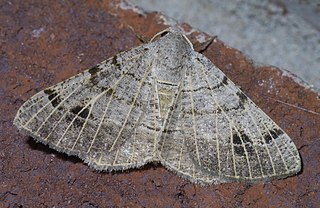
Isturgia dislocaria, the pale-veined isturgia moth, is a species of geometrid moth in the family Geometridae. It first described by Alpheus Spring Packard in 1876 and it is found in North America.

Enypia packardata, or Packard's girdle, is a species of geometrid moth in the family Geometridae. It is found in North America.







